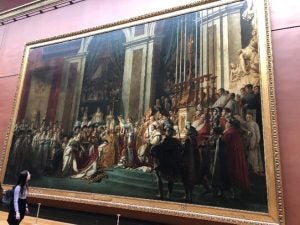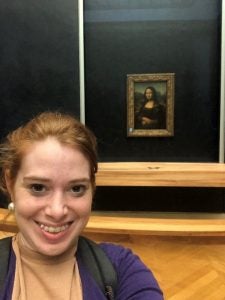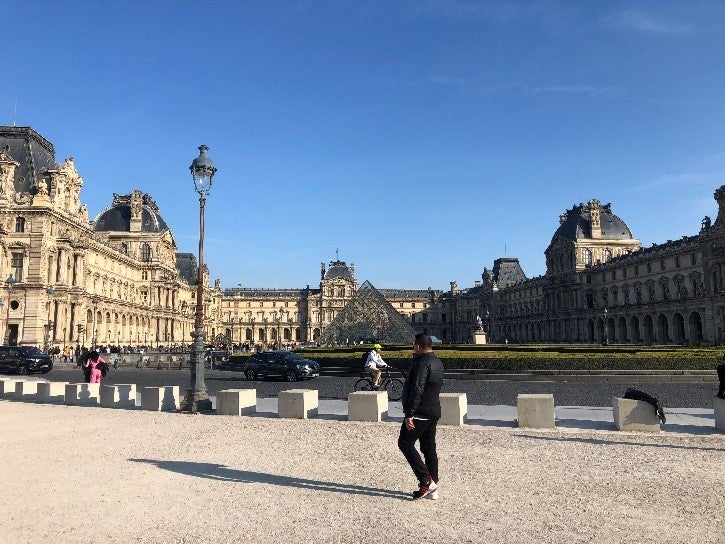May 12, 2022
Study abroad in France - Day 6: The Louvre
by Leslie Lemmons, MBA student
On Thursday, March 10, our study abroad group visited the Café des Tuileries for a group breakfast enjoying the unique French dining experience of crepes and mimosas.
We then collectively headed to The Louvre Museum. The museum was spacious, breathtaking, and very beautiful. I observed several famous works of art: Liberty Leading the People, Aphrodite (Venus de Milo), The Mona Lisa, and the Grand Sphinx. Almost all guides in the museum spoke English and were able to explain the various works of art.
The Mona Lisa, painted by Leonardo da Vinci, is renowned for “creating a conversation with the viewer.” As I waited to take a photo with her, her eye followed me across the room. The artist was careful to place her left eye in the center of the photo.
Every room in the Louvre exhibited a time and place to help preserve its history. Some art expressed truths, while others reflected what the viewers would want to perceive. For instance, in The Coronation of Napoleon, Napoleon’s mother was painted in the portrait but was absent in reality.
At lunch, I dined at the Café Mollien and enjoyed a Bretzel Poulet sandwich, potato chips, and a Chardonnay. The dining in France was extraordinary; every taste was distinctive and rich. All meals had sides that complimented each other.
Later, I visited Liberty Leading the People and saw the French flag displayed with pride. Lady Liberty symbolizes freedom and is routinely used in France’s art history.
As I exited, I visited the Louvre gardens and admired the glass pyramid in the middle of the lawn.
My overall experience at the Louvre left me appreciating the preservation of France’s long history. What most intrigued me was that I felt a part of its story every time I looked at a piece of art. In effect, on this day, I was able to relive parts of France’s history. Imagine how helpful this perspective can be to help one not repeat past historical mistakes! Instead, we could learn from these past experiences and use them with similar present situations to achieve more optimal results. My key takeaway is that in the United States, we don’t preserve our history nearly as much. Instead of preserving our history, we tend to tear it down. In the U.S., buildings are destroyed, and new ones are rebuilt in their place. However, the French value their heritage and culture enough to keep it around for centuries. This day taught me the importance of valuing historical contexts and using them to influence your present-day interactions.
- Categories:
- Graduate Programs
- Study Abroad


